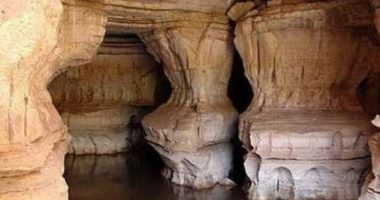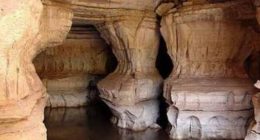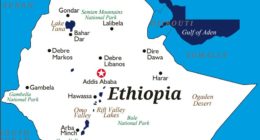The Bale Mountains (also known as the Urgoma Mountains), in the Oromia Region of southeast Ethiopia, south of the Awash River, are part of the Ethiopian Highlands. They include Tullu Demtu, the second-highest mountain in Ethiopia (4377 meters), and Mount Batu (4307 meters). The Weyib River, a tributary of the Jubba River, rises in these mountains east of Goba. The Bale Mountains National Park covers 2,200 square kilometers of these mountains. The main attractions of the park are the wild alpine scenery, and the relative ease with which visitors can see unique birds and mammals.
The Bale Mountains are home to many of Ethiopia’s endemic animals, notably the Ethiopian wolf (Canis simensis), found on the Sanetti Plateau. The park also contains the Harenna Forest, situated to the south of the mountains, which is a largely unexplored area thought to contain many undiscovered species of reptile as well as lions, leopards and various types of antelope. Besides wildlife, the National Park offers trekking opportunities from the park headquarters at Dinsho. (Dodola is also a useful base for exploring these mountains.)
The largest group of Ethiopian wolves is found here. Other characteristic large mammals are mountain nyalas, Menelik’s bushbucks, warthogs, and bohor reedbucks.
- The Bale Mountains are home to the most endemic and prestigious species than any other place on the planet.
- It is strategically located 400km to the Southeastern part of the capital, Addis Ababa, and approximately 150km to the east of Shashemene in the Oromia region.
- Although the weather changes unpredictably, the best time of the year to visit the mountains is in November, December, January, February, and March when the rains have subsided, and the days are quite warm and dry.
- Beware that during such times, temperatures tend to drop to 5°C during the night and 25°C during the day.
- Horse riding, mountain trekking, bird watching, and scenic views are the most incredible sporting activities favorable in the mountains.
- However, for tourists who can tolerate frequent rains, especially in the afternoon, May through July can as well be the best time to the Bale Mountains.
- During this time, most days are mild and chilly, with glowing red flowers and hot pokers. Furthermore, magnificent wildflowers are in plenty glowing throughout a more considerable part of the mountains.
- Importantly, beware that it is not favorable to visit Bale mountains in Ethiopian winter when heavy rains begin pouring.








